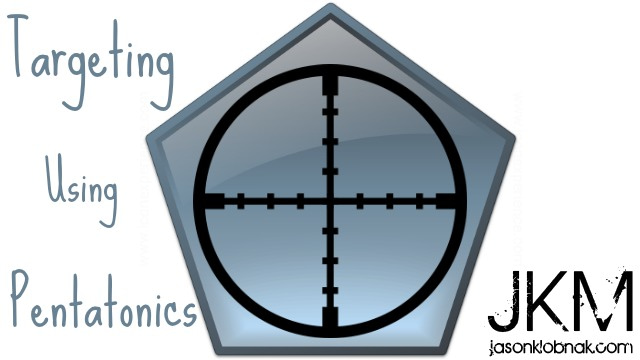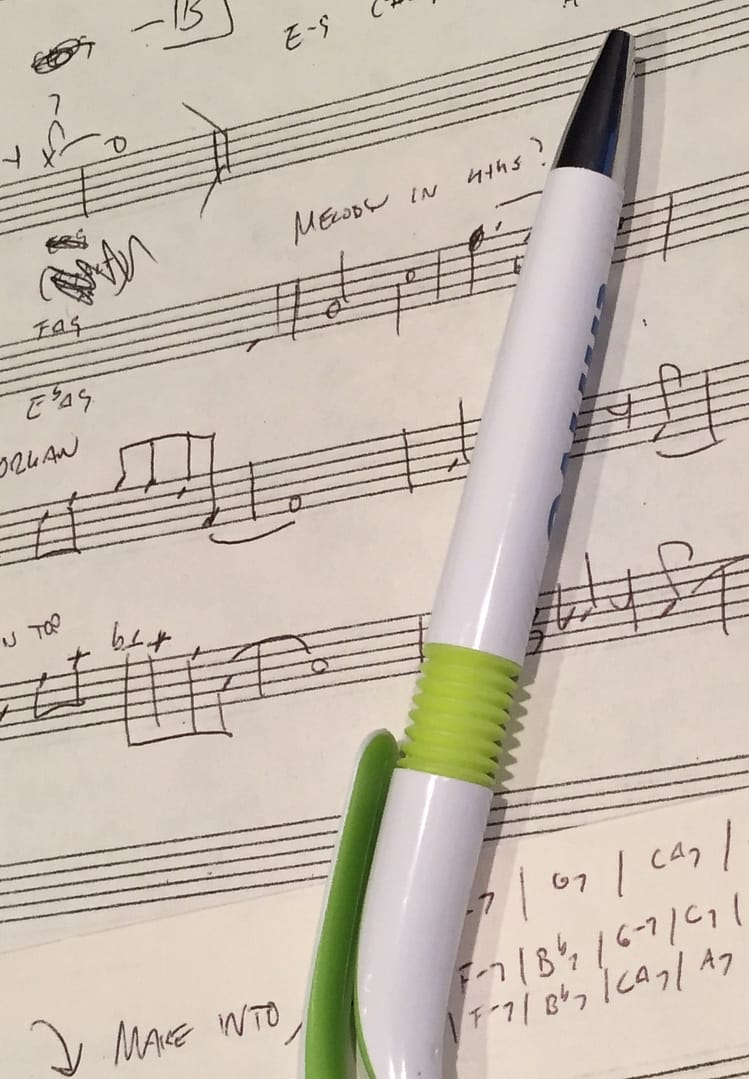Improv Tip Week #6- Targeting Using Pentatonics
Targeting Using Pentatonics
One e-mail I received mentioned that, while they’re enjoying the other tips, they’d like to see a few more from my book, Targeting: Improvisation with Purpose. For those who haven’t had a chance to check out the book yet, it dives into a few different ways we can creatively target a note. One of the chapters discusses the different types of pentatonic scales and how we can use them to target a note. If you listen to some of your favorite improvisers, many of them utilize pentatonics in some form.
The pentatonic scale
It’s an easy scale to learn and can, unfortunately, be over used. However, pentatonics are a great source to create simple melodies and have been used in just about every culture across the globe. Anything we can draw melodic inspiration from can be used in our improvisations. We take that next step by using those melodies to target where we’re going. As you will notice (if you haven’t already), I define targeting as moving to a note with purpose.
First, let’s look at what a basic major pentatonic scale is for those that might not know. A pentatonic scale is a 5-note scale (derived from the root penta which = 5). If you were to construct the scale from the root up it would look like this: Root, 2nd, 3rd, 5th and 6th. A “C-pentatonic” scale is written out below.

Then, if you haven’t already, I would highly suggest learning all 12 of the major pentatonic scales. Get them under your fingers and in your ears. I have a great pentatonic workout in my book, Targeting: Improvisation with Purpose written out in all 12 keys. It’s written out mainly for the younger students, but I strongly suggest you do them without the written exercises.
Let’s talk about how we can use pentatonics to target. We can use any part of the pentatonic scale to get to our targeted note. For this week’s examples, you want to make sure that your targeted note is in the pentatonic scale you’re going to be using. In the ii-V-I example below, I’m going to target the “5th” of the Cmaj7 chord. I’ve determined that I’m going to use a C-major pentatonic scale to get to that target and I’m going to use the C-major pentatonic scale starting on the 2nd scale degree.

The above example is a basic way we can use the pentatonic to target. But, notice how I said that you want to make sure that your targeted note is IN the pentatonics scale you’re going to be using? This implies that we can use pentatonic scales outside of the “key area.” Our next example below is the same line, but using part of the Bb pentatonic scale. Notice how the line still works, but gives it a different color? We’re still targeting the same note, but we’re changing how we get there.

I hope the above tip helps and I’ll talk more about how we can use pentatonics to target notes in the next coming weeks. But if you’d like to learn more, you can check out my book by clicking on Jason Klobnak Music. As always, I truly hope these tips (and the book) are helping! If you have feedback, reviews or comments…please feel free to let me know!
Thank you for checking out my blog! If you’d like to join my mailing list I would love to send you a FREE MP3 from my band -OR- a free etude from one of my books! Simply click on the image below and in a few short steps I’ll send it over!




